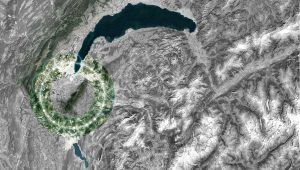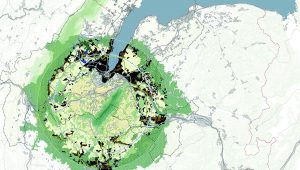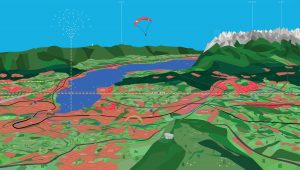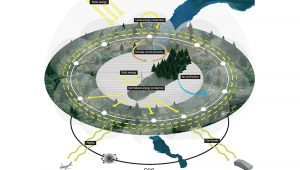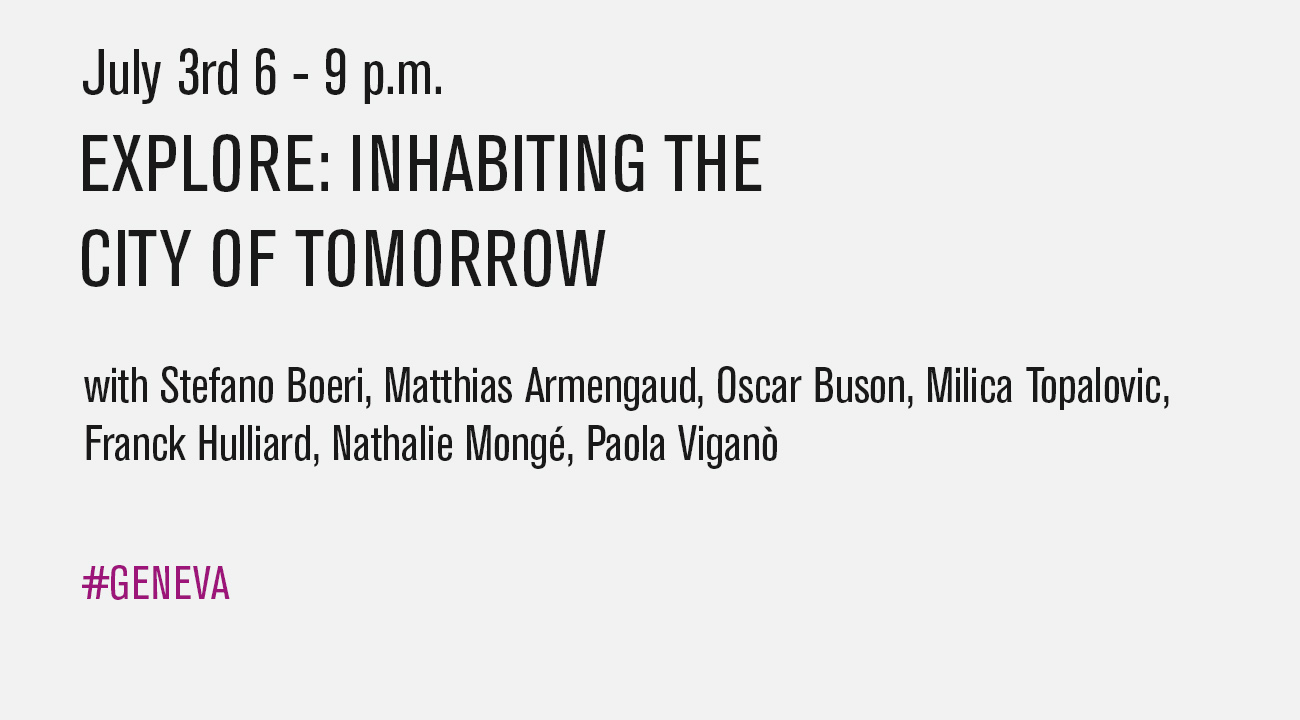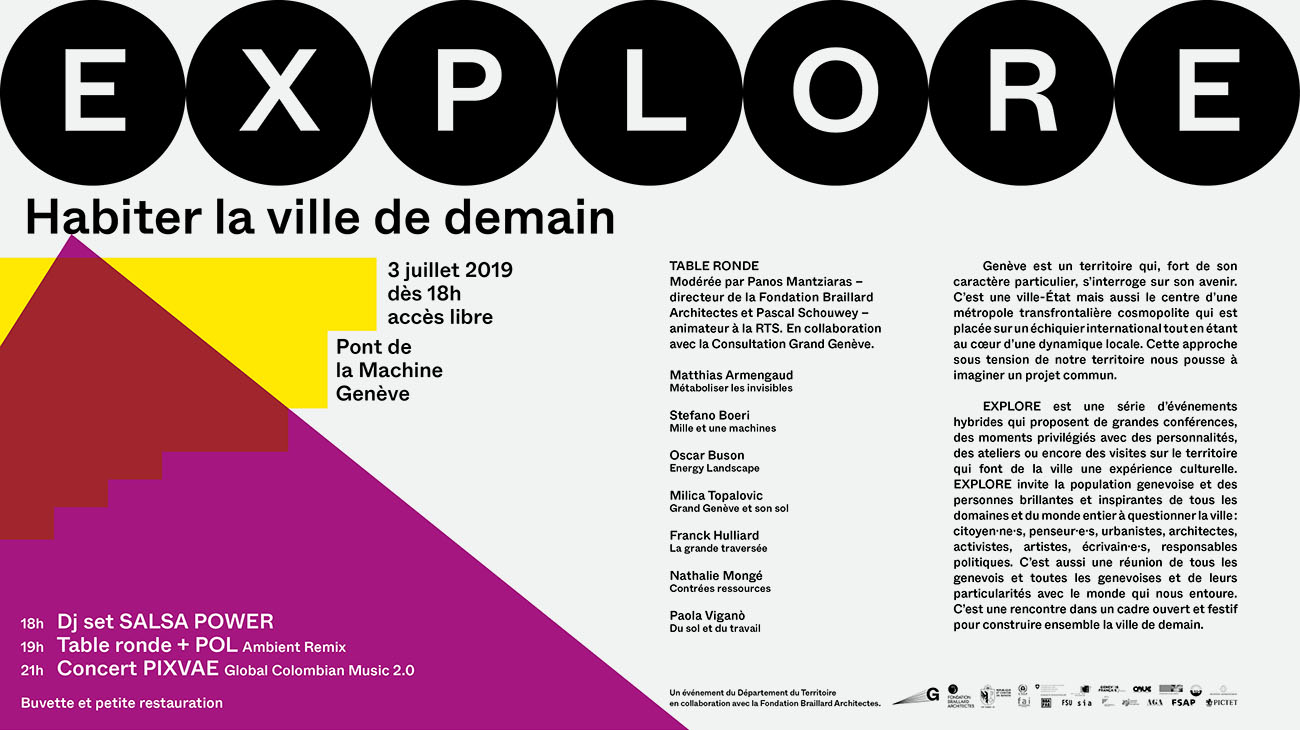Images
Project
Stefano Boeri Architetti
Location
Grand Genève (Suisse, France)
Year
2018-2020
Client
Fondation Braillard Architectes
Typology
Territorial strategy, masterplan, urban forestry
Stefano Boeri Architetti
Founding Partner:
Stefano Boeri
Coordinator:
Corrado Longa
Project manager:
Livia Shamir
Design Team:
Sofia Paoli, Simone Marchetti, Luis Pimentel, Laura Di Donfrancesco
Consultants:
Energy and environmental engineering: Transsolar
Heritage conservation: Angelo Giuseppe Landi
Curator: Martin Guinard
Photographer: Armin Linke
Local architect: Guillaume Yersin
Climate change: Eugenio Morello
Sociologist: Richard Sennett
Partners:
Landscape planning: Michel Desvigne Paysagiste
Architecture: Baukuh
Civil engineering :Bollinger + Grohmann
Mobility: Systematica
The necessity to come to terms with the effects – and causes – of climate change has led to an inevitable rethinking of the concept of the metropolis, towards a completely different scenario.
To avoid the tragedy of sprawl that has ruined European territories, transforming them into out-of-control suburbs, it is more urgent than ever that urban life re-establishes a dialogue with the territory, on the one hand by re-inhabiting small nuclei, villages and towns that are being abandoned and on the other by discovering a direct and contiguous relationship with nature.
The proposal presents a project for the city of Geneva based on the concept of an “archipelago metropolis”, which locates the Salève massif at the centre of the Metropolitan Constellation.
The image of the “archipelago metropolis” recalls the need to reinforce the functional self-sufficiency of the “islands” that compose it: each is different, yet each participates in the same system of relations. At the same time, this image underlines the importance of a common identity, a “sea”, in this case formed by the corridors of ecological biodiversity.
The new constellation, with at its centre not a city but a mountain, the place par excellence of the biodiversity of non-domestic and domestic species, is thus a candidate to become the first planetary manifestation of a coexistence no longer based on authoritarian and aggressive anthropocentrism. A constellation of eleven urban nuclei of large, medium and small size that encompasses the two cities of Geneva and Annecy – and the great mass of the Salève – with the aim of establishing itself as the first planetary metropolis of Biodiversity, initiating an ecological transition of the transnational area of Geneva, where it is expected that by 2050 350.000 new inhabitants will live.
Around the massif, the new kaleidoscopic metropolis extends alternating urban areas, portions of agriculture and forest areas, reducing soil consumption and giving back a structural and generative value to fauna and flora. Nature, in fact, is no longer considered a sphere external to the city, to houses and bodies, but a vital sphere, constitutive of daily life, including urban life.
The Metropolitan Constellation – surrounded by an orbital forest of 55.000 hectares – is designed to grow following on the surface the underground circumference of 100 km, the new particle accelerator (FCC – Future Circular Collider) of CERN, in order to exploit its potential energy and catalyst of multidisciplinary knowledge and cosmopolitan skills.
In order to sustainably meet the needs of the 350.000 new inhabitants, the project incorporates and develops the concepts of energy self-sufficiency, environmental compensation (through reforestation) and circular economy, using as a building material almost exclusively timber from naturalistic forestry in the Salève area.
In this regard, timber processing is centralized at a regional level: new sawmills are located at the margins of the metropolitan area in order to establish a short chain between harvesting activities, production sites and spaces of use, to reduce distances, time and environmental impact. The products of this process are intended for the construction of new buildings as well as the retrofitting and energy and functional upgrading of existing building stock in the area.
At the end of the life cycle of wooden buildings, the various components can find new possibilities for reuse and recycling within the Constellation thanks to the implementation of digital and physical solutions, fulfilling the objectives of energy self-sufficiency and ecological transition. The timber circular economy implementation strategy and forestation program have been developed together with a team of experts, including Professor Eugenio Morello and Professor Fabio Salbitano. The goal is to balance the required land consumption with new forests and, in an estimated time frame of 60 years, ensure a fully autonomous timber economy for the region.
The founding principle of the new Geneva conurbation is its transnational nature, a primary resource to accentuate its openness to the world, integrating the widest cultural and ethnic differences in its territory and embodying – as the first metropolis in the world – that concept of Mondialité that Eduard Glissant proposed for the future of urban coexistence, as a way to protect a strong cultural tradition and lucidly accept the challenge of cultural assimilation and integration. Mondialité is thus opposed to globalization, since it consists in finding a dimension of universality in every local space, a dimension of complexity of the world in every country, in every village, in every city.
These are crucial points for an open metropolis that functions as an archipelago of creative transnational communities where new jobs and skills emerge, thanks to the convergence of the most advanced technologies, international training centres, the headquarters of major multinationals and a local network of research and development institutes.
The kaleidoscopic Metropolis of Geneva and Annecy also includes a system of eleven new Public Schools, open all hours of the day, all days of the year, for all ages; schools that become the nodes of a ring of epicentres of collective life, transforming into reality the concept of collective space proposed by Richard Sennet.
An articulated and sustainable system of zero-emission public and private mobility networks is also designed to intertwine with a series of intermodal telecommuting hubs in order to ensure reduced commuting throughout the metropolitan area. The goal is to be the first and largest carbon neutral zone by 2050. Finally, two UN headquarters specialized in the study of the challenges imposed by climate change and the Anthropocene, find their ideal context to seal an experiment on sustainability with global implications.
The geographical constellation of the new Geneva can become the model of a new form of Metropolis, ready to face the great challenges of the near future of Planet Earth.
An ambitious project that can only be born in an ancient and cultured city, touched by the waters of Lake Geneva and surrounded by great mountain ranges, which over the centuries has hosted some of the giants of Western culture – from Calvino to De Saussure, from Starobinsky to Corboz.
Mountain regions and deep regions of thought from which to start again today to challenge the future.
The numbers of the project:
5.400.000 t of CO2 stored by new wooden constructions
+ 350.000 new inhabitants
155 km of tree planted infrastructure
120 km of E-vehicles ring road
100 km of high voltage underground energy distribution
35 km of railway corridors
9 km of linear agricultural park
100.000 ha of ZEZ – Zero Emission Zone
86.383 ha of smart grid energy areas
60.000 ha of protected natural land
55.000 ha of orbital forest
45.000 ha of agroforestry
4.725 ha of biodiversity protection area on the Salève
+ 11 new self-sufficient centralities
+ 11 agricultural parks
1 UNHACC – UN Headquarters for Anthropocene and Climate Change
1 UN Research Centre for Ecological Transition
0 CO2 emissions from the mobility sector

